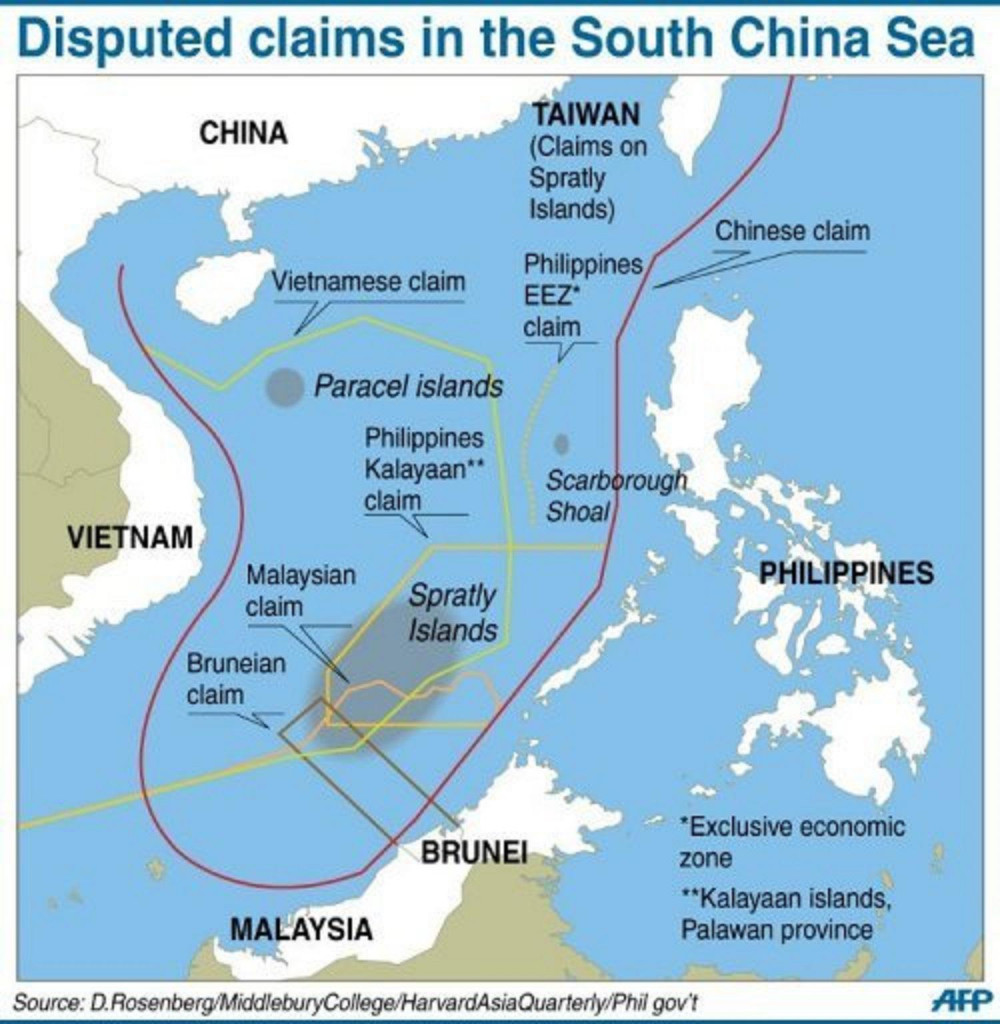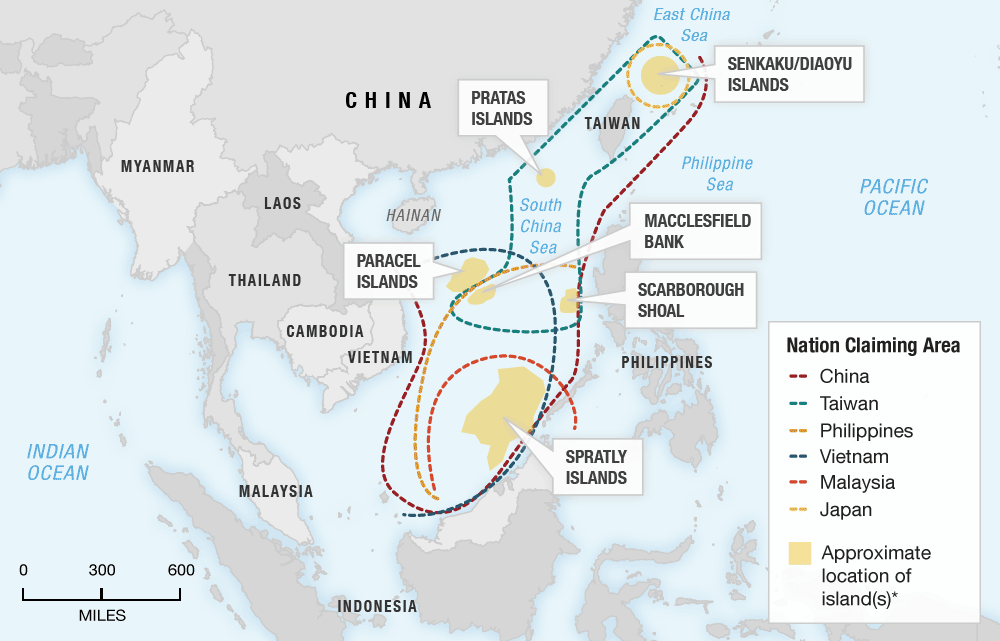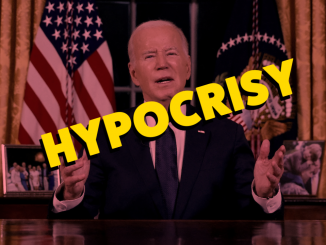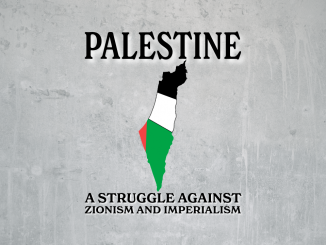The threat of a military conflict between the United States and China could escalate beyond the show of force each has been displaying in the Strait of Taiwan. The Strait is the 110 mile wide body of water that separates China from Taiwan. These displays of military might are supposedly about the autonomy of Taiwan, an island of 23.5 million people off the coast of China. In the days leading up to October 10, a day of national celebration in Taiwan, the People Republic of China (PRC) flew a total of 150 planes – fighter jets and bombers – close to Taiwan’s airspace. A couple of weeks later, following China’s launch of a new hypersonic missile, the U.S. and Canada responded by sending two warships into the Strait of Taiwan. This sort of demonstration of military force in this region is becoming more common.
So far there haven’t been any military exchanges – no ships or planes fired upon or collisions. But, the danger of a miscalculation leading to an incident is ever-present and where this could lead, with both superpowers armed with nuclear weapons, is a horrifying thought.
Why is this happening and why is Taiwan the center of this demonstration of military might? To understand this situation, it is necessary to examine the history that has led to these tensions.
The conflict began following the overthrow of the Qing dynasty in 1911. A strong nationalist movement fought to end foreign domination and the rule of a corrupt Qing dynasty Emperor who ruled China. Over the next decade the Chinese Communist Party (CCP) and the nationalist Kuomintang Party (KMT) led by Chiang Kai-shek engaged in a two-decades-long civil war. Chiang’s forces, aided by the U.S., were focused on defeating the peasant army being formed by Mao Zedong and the CCP. The forces of the CCP were fighting KMT forces as well as the Japanese who controlled much of Northern China, as well as Taiwan. In 1949, Chiang’s nationalist forces were finally defeated. With the help of the U.S., two million KMT troops, wealthy elites and other supporters of the KMT fled to the island of Taiwan, which at the end of World War II was no longer under Japanese rule. Martial law was declared and a dictatorial regime, headed by Chiang, was propped up by United States military power as an outpost of opposition to the regime in mainland China. Because of its allegiance to the U.S. and the prevailing anti-communism, Taiwan was recognized as the “real China” and given its place in the United Nations and on the U.N. Security Council. For nearly twenty years the U.S. refused to conduct even basic diplomatic relations with Mao’s People’s Republics of China (PRC).
In 1971, the United States, under President Nixon, began a process of establishing diplomatic relations with China. The goals were to widen the division between China and the Soviet Union and to position U.S. corporations to exploit Chinese cheap labor. That same year the majority of the nations of the world recognized the PRC, and China was admitted into the United Nations, replacing Taiwan.
Politically the status of Taiwan remains a question for the U.S. Both the KMT and the CCP had a “One China” policy, stating that Taiwan is part of China. Xi Jinping, the president of the Peoples Republic of China insists that Taiwan is a province of China. Formally, the U.S. has adopted the same position, recognizing the PRC as China, whereas the status of Taiwan was and remains ambiguous. Taiwan, titled The Republic of China (ROC), is not recognized as a nation internationally. When the U.S. recognized the PRC as China in 1971, the U.S. government, however, also pledged not to abandon Taiwan and continued to provide military armaments and other forms of support to the Taiwanese government.
With the death of Chiang Kai-shek in 1975, the political climate in Taiwan began to shift in a more liberal direction under the presidency of his son Chiang Ching-kuo (1978 to 1988). Martial law was ended in 1987. New political parties arose that didn’t embrace the One China policy. They appealed to the nationalist sentiments of many Taiwanese, especially the younger generation. The largest was the Democratic Progressive Party (DPP), which become a leading party, and in recent years it won the presidency and currently dominates the legislature. (Recently it has backed off a hardline independence stance.) But the military provocations have continued as the U.S. increased the weapons flow to Taiwan and increased the U.S. military presence in the region – challenging China. In response, China increasingly showed its military might in the Strait of Taiwan.
In the past three decades the economies of China and Taiwan have grown enormously. And the ruling regimes have encouraged nationalist sentiments to rally the support of their populations. The U.S. is an active participant in this as well. Obama extended the U.S. presence in the region to counter China’s influence, opening new bases in Australia and encouraging an anti-China stance from regimes in the area. Since 2015, the United States has been carrying out “Freedom of Navigation Operations” in the South China Sea, sending naval ships extremely close to contested regions that China claims as its own. These vessels go as close as 12 nautical miles from China’s territories. In many instances, China has responded by firing missiles to defend what it claims is its territory. Although these sorts of incidents are a regular occurrence, until this point both sides have been able to avoid any real confrontation despite these provocations.
During the Trump administration, the relationship with China was further upset when his administration took on a rhetorically anti-Chinese tone and initiated some trade sanctions on Chinese products. Trump also encouraged anti-Chinese feelings calling the coronavirus the “China virus”. In 2016, when the leader of the DPP was re-elected as president using a campaign of Taiwan nationalism, Trump officially congratulated her on her victory.
The conflict has not slowed down during the Biden administration. In the most recent G7 meeting, Biden led the charge to set the stage for demonizing China. U.S. Special Forces have been sent to train Taiwanese personnel. The Biden administration recently explicitly said that it is “committed to protect Taiwan” if China were to invade the island.
There are important economic forces at play here. With the pandemic and accompanying production and shipping problems, many people became aware of the essential role that semiconductors play in the world economy, from cars to phones, essential telecommunications and more. The Taiwan Semiconductor Manufacturing Company (TSMC) produces around 50% of these essential chips and 92% of the most advanced chips. Both the U.S. and China, as well the rest of the world, are dependent on Taiwanese semiconductors. (The TSMC is in the process of building a $12 billion semiconductor plant in Arizona).
In addition to the role of Taiwan in the world’s economy, there is the question of who will dominate the South China Sea, which serves as the connection between the Pacific and Indian Oceans. More than one-third of all international commerce, a value of close to $4 trillion dollars every year, passes through these maritime waters. This includes 90% of the petroleum shipped to China, Japan and South Korea which pass through these waters and 40% of China’s exports. To protect its interests, China claims this as its territorial waters and has built “artificial islands” in the Spratly Islands, which now serve as military outposts.
Despite China’s growing military power, when it comes to military capacity, no country comes close to the United States, with bases all over the world. The proposed U.S military budget for 2022 is $753 billion. In comparison, China spent almost a third of that, at $261 billion annually.
There is a lot at stake in this intensifying competition, and Taiwan’s sovereignty is used to whip up a nationalist support among the people in the countries involved. In the U.S., Biden portrays China as a threat to the U.S. economy and peace in Asia. In China, President Xi Jinping uses the question of One China to enlist support for his expansionist policies. And it is no different in Taiwan where president Tsai Ing-wen relies on the threat that China could pose to the well-being of the people of Taiwan to win support.
The governments of the U.S., China, and Taiwan represent the interests of the banks and large corporations. They are willing to threaten to use weapons of mass destruction to control the wealth that workers produce and to expand their control over the world’s economy. Their threats could lead to an incident that pushes them into an open military conflict , possibly escalating to a nuclear war.
The people of Taiwan have the right to determine their own future. Workers across the world share the same interests. We have no reason to line up behind the maneuvers of any of the governments of the billionaires.






